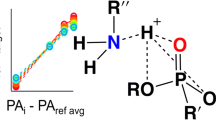Abstract
Radioisotopes and hazardous gases can have undetermined environmental pathways. Researchers at Pacific Northwest National Laboratory constructed a chamber that complies with the requirements needed for an atmospheric reaction platform and the safety principles of interacting with hazardous dispersible sources to enable the environmental testing of these gases. Initial dynamic testing showed inter-chamber mixing completed from minutes to 1.5 h. The photooxidation of butyl iodine showed the presence of signals from reaction products and intermediaries for up to 50 h. Current detection limits of the chamber and analytical collection and testing approach were shown to be in the single-digit parts per billion levels. The comparisons between the measured oxidation trends and literature show the utility of performing laboratory experiments to validate the results of modeling for larger-scale scenarios.
Graphical abstract
Researchers at Pacific Northwest National Laboratory constructed and tested an atmospheric chamber that begins to demonstrate the utility of such a chamber design for the study of the atmospheric fate of especially hazardous and radioactive gases.





Similar content being viewed by others
References
H. Elkhatib, M.A. Awad, M.A. El-Samanoudy, Prog. Nucl. Energy 134, 103674 (2021). https://doi.org/10.1016/j.pnucene.2021.103674
A.I. Kryshev, T.G. Sazykina, M.E. Vasyanovich, A.A. Ekidin, I.A. Kapustin, At. Energ. 130, 5 (2021). https://doi.org/10.1007/s10512-021-00814-8
G.W. Luther, Front. Mar. Sci. 10, 1–16 (2023). https://doi.org/10.3389/fmars.2023.1085618
A. Saiz-Lopez, J.M.C. Plane, C.A. Cuevas, A.S. Mahajan, J.F. Lamarque, D.E. Kinnison, Atmos. Chem. and Phys. 16, 15593–15604 (2016). https://doi.org/10.5194/acp-16-15593-2016
R. Sommariva, W.J. Bloss, R. von Glasow, Atmos. Environ. 57, 219–232 (2012). https://doi.org/10.1016/j.atmosenv.2012.04.032
K. Tagami, S. Uchida, Y. Uchihori, N. Ishii, H. Kitamura, Y. Shirakawa, Sci. Total. Environ. 409, 22 (2011). https://doi.org/10.1016/j.scitotenv.2011.07.067
J.E. Ten Hoeve, M.Z. Jacobson, Energy Environ. Sci. 5, 9 (2012). https://doi.org/10.1039/c2ee22019a
G.M. Hidy, Atmosphere 10, 7 (2019). https://doi.org/10.3390/atmos10070401
C.M. Olteanu, V. Nistor, S.C. Valeca, in Proceedings of NUCLEAR 2016 the 9th Annual International Conference on Sustainable Development through Nuclear Research and Education Part 3/3, 207. (2016) http://inis.iaea.org/search/search.aspx?orig_q=RN:48103736
L. Hubbard, A. Ritzmann, J. Wahl, J.E. Shilling, C. Soderquist, D. Abrecht, N. Smith, MRS Commun. 13, 256–262 (2023). https://doi.org/10.1557/s43579-023-00337-2
H.S. Shin, Y.S. Oh-Shin, J.H. Kim, J.K. Ryu, J. Chromatogr. A 732, 2 (1996). https://doi.org/10.1016/0021-9673(95)01281-8
S. Zhang, K.A. Schwehr, Y.F. Ho, C. Xu, K.A. Roberts, D.I. Kaplan, R. Brinkmeyer, C.M. Yeager, P.H. Santschi, Environ. Sci. Technol. 44, 23 (2010). https://doi.org/10.1021/es102047y
C. Fortin, V. Fèvre-Nollet, F. Cousin, P. Lebègue, F. Louis, Atmos. Environ. 214, 116838 (2019). https://doi.org/10.1016/j.atmosenv.2019.116838
Acknowledgments
This research was supported by the Chemical Dynamics Initiative (CDI) at Pacific Northwest National Laboratory (PNNL). PNNL draws on signature capabilities in chemistry, earth sciences, and data analytics to advance scientific discovery and create solutions to the nation's toughest challenges in energy resiliency and national security. PNNL is operated by Battelle for the U.S. Department of Energy under Contract No. DE-AC05-76RL0-1830.
Funding
This research was supported by the Chemical Dynamics Initiative (CDI) at Pacific Northwest National Laboratory (PNNL). PNNL draws on signature capabilities in chemistry, earth sciences, and data analytics to advance scientific discovery and create solutions to the nation's toughest challenges in energy resiliency and national security. PNNL is operated by Battelle for the U.S. Department of Energy under Contract No. DE-AC05-76RL0-1830.
Author information
Authors and Affiliations
Contributions
LH and NS: designed and directed the project. NS: performed the experiments. ML, JW, and LH: analyzed spectra. NH: developed the theoretical framework. LH: wrote the article.
Corresponding author
Ethics declarations
Conflict of interest
On behalf of all authors, the corresponding author states that there is no conflict of interest.
Data availability
The datasets generated during and/or analyzed during the current study are available from the corresponding author upon reasonable request. Release ID: PNNL-SA-186294.
Additional information
Publisher's Note
Springer Nature remains neutral with regard to jurisdictional claims in published maps and institutional affiliations.
Supplementary Information
Below is the link to the electronic supplementary material.
Rights and permissions
Springer Nature or its licensor (e.g. a society or other partner) holds exclusive rights to this article under a publishing agreement with the author(s) or other rightsholder(s); author self-archiving of the accepted manuscript version of this article is solely governed by the terms of such publishing agreement and applicable law.
About this article
Cite this article
Smith, N., Hubbard, L., Lonsway, M. et al. Initial dynamic photoactive materials testing of an atmospheric chamber intended for radioactive and hazardous gases. MRS Advances 8, 1097–1101 (2023). https://doi.org/10.1557/s43580-023-00708-w
Received:
Accepted:
Published:
Issue Date:
DOI: https://doi.org/10.1557/s43580-023-00708-w




